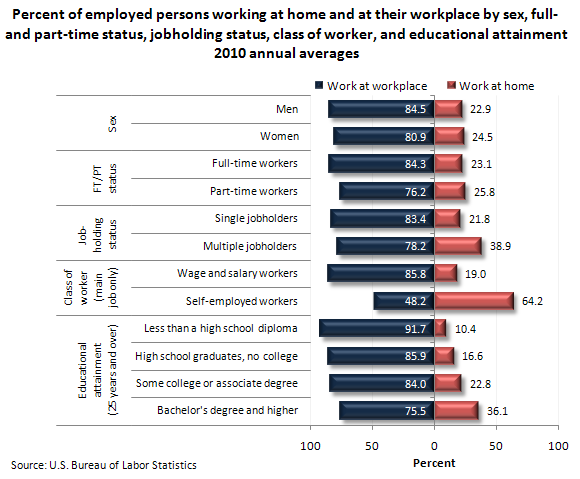Who is Working from Home?

Although recent research does not identify whether or not people who work at home choose to, certainly the role of choice is an underlying aspect of these surveyed workers. This seems particularly relevant when considering who is working at home these days. Largely people with more education are the ones finding work at home. In 2010, on the days that they worked, 36 percent of employed people age 25 and over with a bachelor’s degree or higher did some work at home, compared with only 10 percent of those with less than a high school diploma.
Men and women were about equally likely to do some or all of their work at home in 2010—22.9 percent of employed men compared with 24.5 percent of employed women. In 2010, multiple jobholders were nearly twice as likely to work at home as were single jobholders in 2010—39 percent compared with 22 percent.
Self-employed workers were three times more likely than wage and salary workers to have done some work at home on days worked in 2010—64 percent compared with 19 percent.


